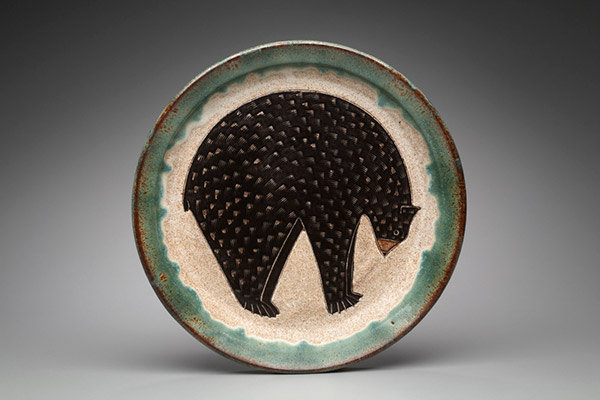Peder Hegland’s artistic style and career have been evolving for many years, and this journey has brought the potter face-to-face with some of the medium’s most renowned figures and its ancient origins. His fascinating story is one you’ll enjoy.
The power to manipulate earth’s materials into something beautiful is an ability that all human beings share, but few master. Pottery is one of the oldest forms of artistic creation, and, since its beginnings, the medium has required that its practitioner possess both three- and two-dimensional aesthetic skill. Moreover, audiences are offered a multi-sensory relationship with the objects through function, which itself has subtle degrees of success and failure. These fundamental principles of pottery are challenging — at best — to crack, requiring years of development, trial and error, triumph and failure. Peder Hegland has experienced all of the above, and through it all he’s emerged with outstanding results.
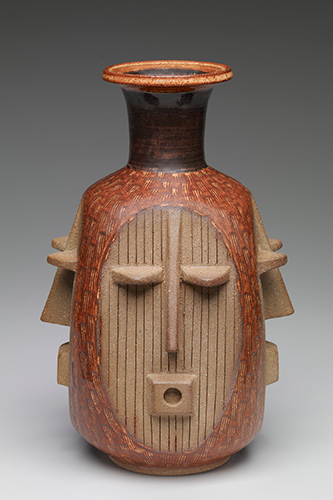
Peder Hegland, “Faces of the Wind Vase,” stoneware, cone 8 oxidation, (c) Peder Hegland 2016, Photo Peter Lee
Hegland hails from Racine, Wisconsin, and his journey to becoming a successful artist was quite unexpected. “I was a chemistry major as an undergraduate at Luther College in Decorah [Iowa],” says Hegland, “and my whole background had been in science. I enjoyed science and remember taking a test early on in which I scored high in that area. Art wasn’t on my radar. My roommate, however, was an artist, and I remember watching what he was doing. It was really interesting, and he seemed to be having such a good time doing it.” Hegland’s roommate would, during their senior year, end up teaching a beginning pottery class in lieu of Dean Schwarz, who had taken a sabbatical in Korea. The opportunity proved too tempting, and Hegland gave it a try.

Peder Hegland, “Deer Vase,” stoneware, cone 8 oxidation, (c) Peder Hegland 2016, Photo Peter Lee
“By the end of the first week, I was completely into it,” he says. “Pottery was so exciting, and it was like a whole new world opening up to me.” Hegland graduated that year with his Bachelor’s in Chemistry, but the experience with his roommate was the first domino — and all it took.
Today, Hegland’s work blends traditional full forms with clean abstract patterning and, frequently, images of wildlife and plants. Hegland regularly looks to nature for his sources of inspiration in addition to ancient pottery from North and South America, Greece, and the Near East. His stylistic approach developed early in his career while attending summer workshops with Bauhaus-trained master potter Marguerite Wildenhain (1896-1985) at her Pond Farm near Guerneville, California. Wildenhain’s legacy is far-reaching, and she’s known for having taught the importance of endowing each piece with life, heart, and soul. Hegland suggests, “Nature has always been the main interest for me, and that was a big part of Marguerite’s teaching. She always told us that there was an infinite amount of lessons in nature and to look at things — to try and see what’s there.” Hegland also noted his relationship with Wildenhain’s longtime assistant, David Stewart, whose mentorship – and friendship – greatly influenced his career.
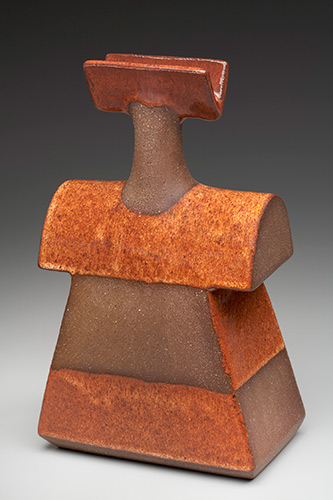
Peder Hegland, “Naxos,” stoneware, cone 8 oxidation, (c) Peder Hegland 2016, Photo Peter Lee
Part of Wildenhain’s rigorous training at the Bauhaus involved glaze and clay alchemy. Students were required to formulate their own recipes and build their work from the ground up. Enter Hegland’s chemistry background. Although Wildenhain’s teaching focused on good form and aesthetics, Hegland took Marguerite’s Bauhaus lessons to heart. Years of personal experimentation have allowed him to develop his own unique clay body and palette of glazes. The resulting works are incredibly unique, but one can easily detect the potter’s interest in ancient surface decoration through the simplification of form. Hegland’s clay body is a beautiful dark, earthy tone with soft yet gritty textures. Using glazes, slips (liquid clay), other colorants, and carving, the surfaces of his work present the eyes — and hands — with an epic aesthetic journey.
“What’s most important to me is that the surface design accentuates and complements the form” Hegland says. “I try to keep my designs simple and patterned so that both the two-dimensional and three-dimensional are in balance.” However simple the motifs may be, they visually communicate to audiences with clarity and ease.
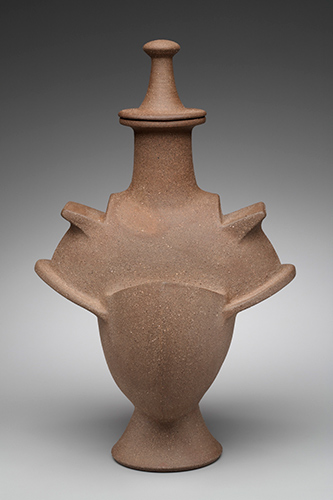
Peder Hegland, “Dave’s Bottle,” stoneware, cone 8 oxidation, (c) Peder Hegland 2016, Photo Peter Lee
Recently, Hegland has begun to experiment with his work off the potter’s wheel. Using rolled slabs of clay, Hegland cuts and constructs his pieces like a builder. The results are more geometric, perhaps architectural, but always functional. “The process is much longer with hand-building, but it allows me to invest myself more into each individual work,” he says. “The simple geometry of the works also recalls ancient designs and sometimes the figure.” Indeed, the daunting task of tackling the figure is an element Hegland seeks to explore in future works. With his style firmly established, it is tantalizing to wonder how it might translate into figurative imagery.
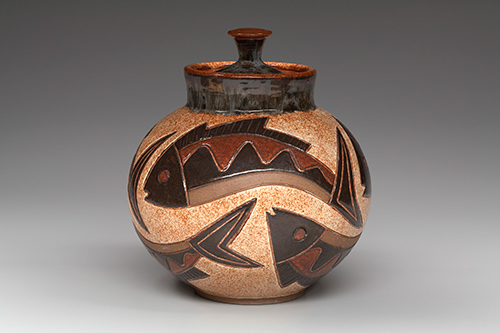
Peder Hegland, “Swimming Fish Jar,” stoneware, cone 8 oxidation, (c) Peder Hegland 2016, Photo Peter Lee
Hegland is one of the most down-to-earth artists you’ll ever meet, and he’s never pushed for widespread acclaim or notoriety. In truth, this may be a blessing in disguise because the quiet seclusion has allowed Hegland to focus on that which matters most: his art. In this way, Hegland’s work is pure, original, highly developed, and sophisticated — all ingredients for an artistic legacy that will stand the test of time.
To learn more, visit Peder Hegland.
This article was featured in Fine Art Today, a weekly e-newsletter from Fine Art Connoisseur magazine. To start receiving Fine Art Today for free, click here.

